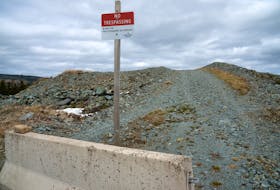Doreen Churchill is working on a study that could help Corner Brook Pulp and Paper save money and help the environment.
The project co-ordinator with Natural Resources Canada discussed her work when she presented at the bio-economy business development workshop segment of the Forestry Innovation Day event held in Corner Brook Thursday.
Currently, Corner Brook Pulp and Paper burns biofuels in its boiler to help create energy for the mill’s operations. That fuel includes bark from the mill’s wood room, but also other timber harvested by its woodlands operations, lumber provided by sawmills in the province, construction waste removed from the landfill and dewatered sludge from the mill’s wastewater treatment system.
The subsequent ash produced, including that caught by a filtration system to keep the lighter fly ash from being emitted into the environment, ends up in a dumpster and is brought to a landfill.
Churchill said the ash meets national standards required to use the residual material for other purposes. The ash, she said could be used to raise the pH levels of acidic soil conditions and contains nutrients that could be beneficial for some agricultural and forestry operations.
There are some other hurdles that would have to be undertaken before using it, she noted.
“It would be regulated by the province, so they would set the regulations, procedures and policies around using it,” said Churchill. “Then there’s the logistics of storing it, transporting and actually getting it out of the mill’s boiler.”
She elaborated that the mill’s current boiler system is not designed to efficiently remove fly ash so it can be re-used.
Fly ash is used in agricultural operations in Nova Scotia, she noted, and it could also have a possible use in concrete manufacturing.
“If we were able to prove that it is viable and we could find sources for it, it could go ahead as a commercially viable product,” she said. “It would be a waste diversion for them and a cost reduction, and it would help agriculture or forestry with nutrient requirements.”









